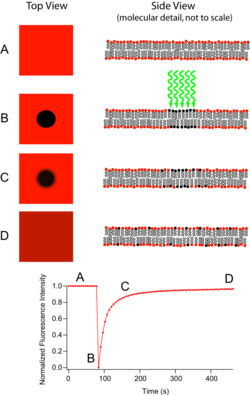| Display title | Biology:Fluorescence recovery after photobleaching |
| Default sort key | Fluorescence Recovery After Photobleaching |
| Page length (in bytes) | 20,484 |
| Namespace ID | 3026 |
| Namespace | Biology |
| Page ID | 342702 |
| Page content language | en - English |
| Page content model | wikitext |
| Indexing by robots | Allowed |
| Number of redirects to this page | 0 |
| Counted as a content page | Yes |
| Page image |  |
| HandWiki item ID | None |
| Edit | Allow all users (infinite) |
| Move | Allow all users (infinite) |
| Page creator | imported>Rtexter1 |
| Date of page creation | 02:22, 12 February 2024 |
| Latest editor | imported>Rtexter1 |
| Date of latest edit | 02:22, 12 February 2024 |
| Total number of edits | 1 |
| Recent number of edits (within past 90 days) | 0 |
| Recent number of distinct authors | 0 |
Description | Content |
Article description: (description)
This attribute controls the content of the description and og:description elements. | Fluorescence recovery after photobleaching (FRAP) is a method for determining the kinetics of diffusion through tissue or cells. It is capable of quantifying the two-dimensional lateral diffusion of a molecularly thin film containing fluorescently labeled probes, or to examine single cells. This technique... |
